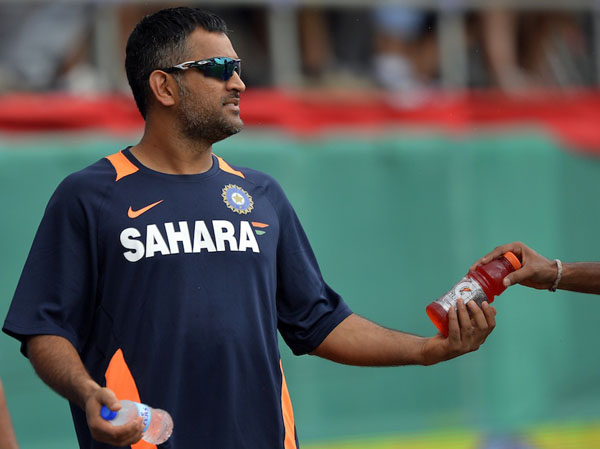Delhi: M.S.Dhoni walked slowly near the boundary of the Mahinda Rajapaksa International Cricket Stadium near Hambantota, the notorious wind howling across from the forest behind him. But his thoughts were on something else, his eyes warily sizing up the outfield, easily one of the biggest in international cricket. His first reaction: “It will be very difficult to stop twos and threes on this ground.” It was an instant, momentary glimpse into how Dhoni’s mind works. Almost immediately, he moved on to pleasantries about the remoteness of the area.
The Hambantota trip was in July 2012. Already, the introduction of two new balls had snatched away reverse swing and the last remaining signs of attacking spin bowling in ODIs. With specialist bowlers who have made him lament the absence of Yuvraj Singh’s part-time slow left-armers, Dhoni’s problems were to be aggravated, especially in home conditions: A couple of months later, the maximum number of deep fielders was reduced to four from five. For a man who won the World Cup with an ageing team, and two years later, the Champions Trophy with a raw squad, this new combination of unreliable bowlers and unfavourable rules poses a daunting challenge.
Dhoni’s limited-overs captaincy, and by unfortunate extension, at times his Test captaincy, is about damage control. He hates conceding runs. Not that other captains enjoy giving them away, but in Dhoni’s case, it is the core philosophy of how he operates. At times, a fumble or a late reaction from a deep fielder will make him punch one gloved hand with the other in frustration. You will seldom see a similar reaction from him for a dropped catch.
Dhoni does not take wickets to restrict runs. He restricts runs to take wickets. That is why he likes and backs Ravindra Jadeja so much. That is why he has so much time for Pragyan Ojha, in Tests. He waits and waits for an opportunity and then moves in like a boa constrictor. As soon as the Australia openers fell in Mohali, he turned to Jadeja and Yuvraj, who darted the ball in backed by a packed leg-side field. The runs dried out. The asking-rate increased. Australia lost crucial middle-order wickets. The Dhoni formula seemed to be working again, till James Faulkner v Ishant Sharma happened.
It is easy to label him defensive, but there is a contributing factor to why his style is the way it is. Dhoni’s never had the kind of ODI bowlers who can consistently deliver wickets without going for runs. He does not have a Mitchell Johnson who can run through a line-up with extreme pace and bounce. He does not have a Saeed Ajmal who can contain as well as strike reliably.
When he’s found someone like a Bhuvneshwar Kumar, who delivers more often than not with the new ball, he’s given him extended spells at the start. Bhuvneshwar is a limited bowler at the moment, and Dhoni tries to maximise his strength with the new ball. But even a Bhuvneshwar is a rarity for Dhoni.
Over a large period of his captaincy, Dhoni also had the headache of where to hide several slow men on the field. Though India’s young batsmen have upped the standards considerably, Dhoni still has to deal with where to place R Ashwin and Ishant – both not exactly assets on the field. One wonders his plight if he had to operate under the restriction of four deep fielders with some of the older sides he’s led.
The India captain has been quite vocal about his discomfort with the new rule that has compounded his worries of minimising the damage his bowlers frequently inflict upon his batsmen. Five deep fielders were about the only hedge Dhoni had against bowlers who regularly panic and lose their discipline at the death. For a captain who isn’t comfortable with “spoon-feeding” bowlers, he’s increasingly started to run to them when they do the exact opposite of what the field is set for, which is often.
His exasperation was clear at the toss in Mohali where he said something to the tune of “I don’t know what they want us to do” with all the new rules. The impact is being felt acutely in home ODIs played on placid pitches. India have already lost six of 11 home games in the past year playing with four deep fielders. Over the same period between 2011 and 2012, they’d lost one in ten matches at home. With one less man to protect the boundary, Dhoni has a serious challenge on his hands and it will have to be somehow tackled on the field working with the same set of bowlers. Having probably the most powerful ODI batting line-up has worked as an insurance against profligate bowlers in the past but it might no longer suffice.

